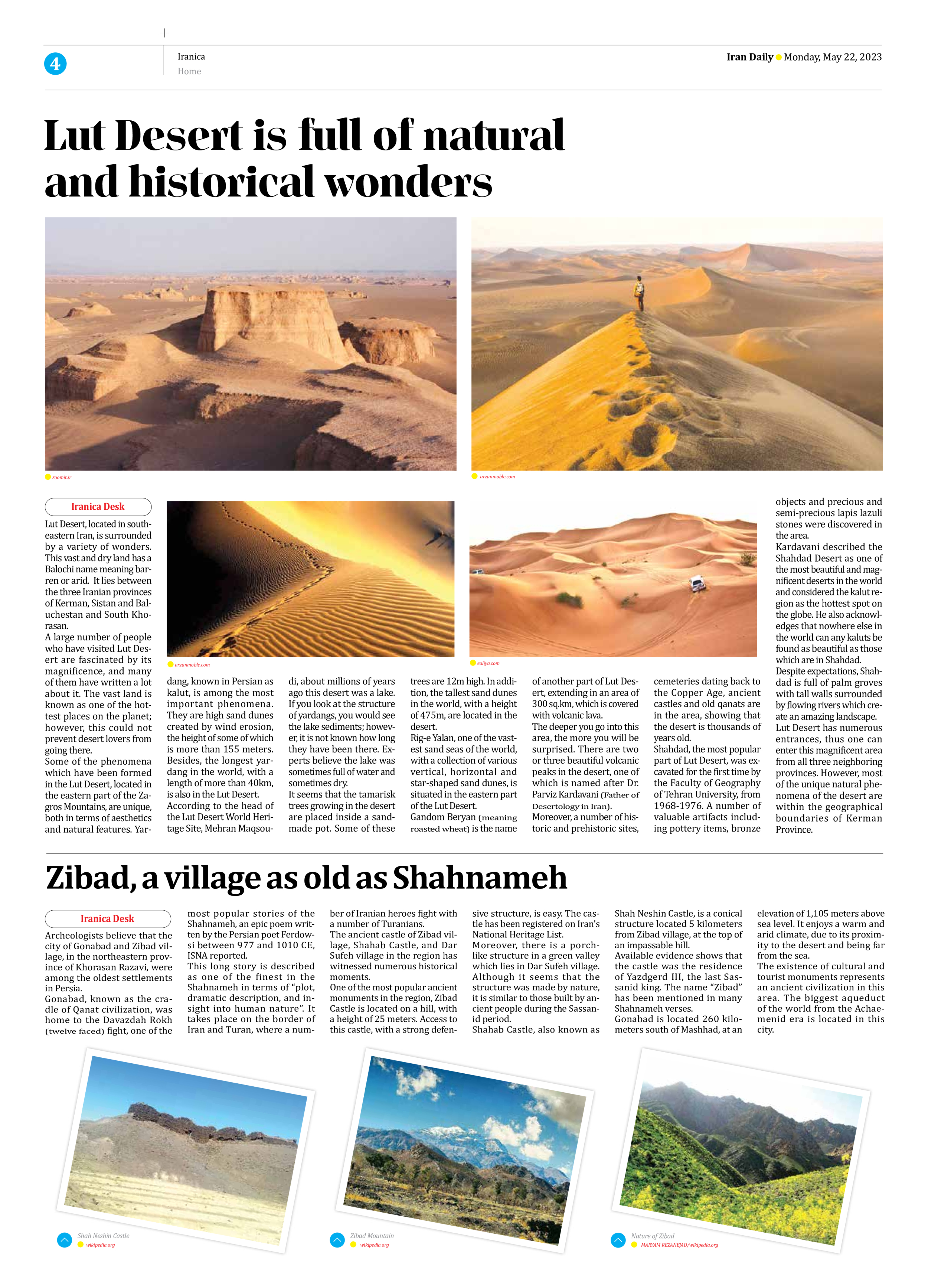
Lut Desert is full of natural and historical wonders
Lut Desert, located in southeastern Iran, is surrounded by a variety of wonders. This vast and dry land has a Balochi name meaning barren or arid. It lies between the three Iranian provinces of Kerman, Sistan and Baluchestan and South Khorasan.
A large number of people who have visited Lut Desert are fascinated by its magnificence, and many of them have written a lot about it. The vast land is known as one of the hottest places on the planet; however, this could not prevent desert lovers from going there.
Some of the phenomena which have been formed in the Lut Desert, located in the eastern part of the Zagros Mountains, are unique, both in terms of aesthetics and natural features. Yardang, known in Persian as kalut, is among the most important phenomena. They are high sand dunes created by wind erosion, the height of some of which is more than 155 meters. Besides, the longest yardang in the world, with a length of more than 40km, is also in the Lut Desert.
According to the head of the Lut Desert World Heritage Site, Mehran Maqsoudi, about millions of years ago this desert was a lake. If you look at the structure of yardangs, you would see the lake sediments; however, it is not known how long they have been there. Experts believe the lake was sometimes full of water and sometimes dry.
It seems that the tamarisk trees growing in the desert are placed inside a sand-made pot. Some of these trees are 12m high. In addition, the tallest sand dunes in the world, with a height of 475m, are located in the desert.
Rig-e Yalan, one of the vastest sand seas of the world, with a collection of various vertical, horizontal and star-shaped sand dunes, is situated in the eastern part of the Lut Desert.
Gandom Beryan (meaning roasted wheat) is the name of another part of Lut Desert, extending in an area of 300 sq.km, which is covered with volcanic lava.
The deeper you go into this area, the more you will be surprised. There are two or three beautiful volcanic peaks in the desert, one of which is named after Dr. Parviz Kardavani (Father of Desertology in Iran).
Moreover, a number of historic and prehistoric sites, cemeteries dating back to the Copper Age, ancient castles and old qanats are in the area, showing that the desert is thousands of years old.
Shahdad, the most popular part of Lut Desert, was excavated for the first time by the Faculty of Geography of Tehran University, from 1968-1976. A number of valuable artifacts including pottery items, bronze objects and precious and semi-precious lapis lazuli stones were discovered in the area.
Kardavani described the Shahdad Desert as one of the most beautiful and magnificent deserts in the world and considered the kalut region as the hottest spot on the globe. He also acknowledges that nowhere else in the world can any kaluts be found as beautiful as those which are in Shahdad.
Despite expectations, Shahdad is full of palm groves with tall walls surrounded by flowing rivers which create an amazing landscape.
Lut Desert has numerous entrances, thus one can enter this magnificent area from all three neighboring provinces. However, most of the unique natural phenomena of the desert are within the geographical boundaries of Kerman Province.







